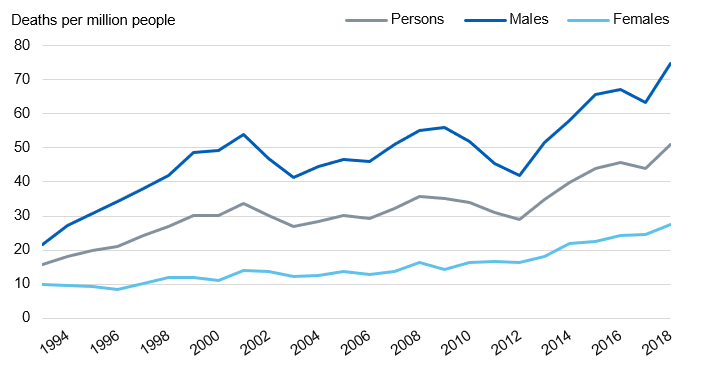CONSENT AND RIGHT TO UNSUBSCRIBE
I consent to my name and email address being used to
send me news and updates from the Safer Nightlife
website.
You can unsubscribe at any time.
Guidelines on when to call the Emergency Services 999 for unwell recreational drug users
Call 999 if ANY one of the following is present:
Unconsciousness – if the patient does not respond to vocal commands, requires painful stimulus (e.g. pressure across the fingernails) to respond or does not respond at all.
Significant agitation (e.g. pacing around the room) or aggression not settling within 15 minutes.
Seizures (e.g. a convulsion similar to an epileptic fit)
Breathing difficulties such as fast breathing rate which does not settle within 15 minutes.
Heart rate over 140 beats per minute not settling within 5 minutes.
Temperature over 38.5 not settling after about 5 minutes of rest, or if very flushed and feels very hot if no thermometer is available.
Blood pressure – Systolic (“upper pressure”) over 180mmHg, or Diastolic (“lower pressure”) over 110mmHg on two repeated blood pressure measurements.
Other concerns – if there are any other concerns (e.g. severe headache, chest pain).
IF IN DOUBT CALL 999
Download as a PDF
27.01.2020
This annual digest of all drug statistics makes for important reading, including details on the national scandal of drug-related deaths.
Once a year, NHS Digital publishes a really useful compendium of drug misuse statistics overseen by the Office of National Statistics which covers:
You can see the latest set of here which covers data for the 2018/19 financial year.
Three measures for the number of drug related hospital admissions have been calculated using Hospital Episode Statistics (HES) data:
Hospital admissions with a primary diagnosis of drug-related mental and behavioural disorders – referred to as admissions for drug related mental and behavioural disorders.
Hospital admissions with a primary diagnosis of poisoning by drugs, that are listed as controlled under the Misuse of Drugs Act 1971 (includes both intentional and unintentional poisoning) – referred to as admissions for poisoning by drug misuse.
For measures 1 and 2, a drug related mental and behavioural disorder, or poisoning by drug misuse were the main reason for the admission (primary diagnosis).
Hospital admissions with a primary or secondary diagnosis of drug-related mental and behavioural disorders – referred to as admissions where drug related mental and behavioural disorders were a factor.
In 2018/19 there were 7,376 admissions for drug related mental and behavioural disorders, a 2% increase on 2017/18 (7,258), but 14% less than 3 years ago in 2015/16 (8,621). This was preceded by a period of mostly increases; the current level still being 30% higher than 2008/09 (5,668). The number of admissions for 2018/19 represents a rate of 13 per 100,000 population.
There were 18,053 admissions for poisoning by drug misuse, a 6% increase on 2017/18, and 16% higher than in 2012/13 (15,580).
The figures presented here are for deaths registered each year, rather than deaths occurring each year. Almost all drug-related deaths are certified by a coroner. Due to the length of time it takes a coroner to complete an inquest, about half of drug-related deaths registered in a particular year will have actually occurred prior to that year.
For each year in the last decade, around two-thirds of all drug poisoning deaths were from drug misuse. In 2018 there were 2,917 deaths relating to drug misuse, out of a total of 4,359 drug poisoning deaths.
The rate of deaths relating to drug misuse in 2018 was 50.9 deaths per million people; an increase compared to 43.9 deaths per million people in 2017.
The rate of male drug misuse deaths is over two and a half times greater than the female rate.
81% (2,353) of deaths related to drug misuse were due to accidental poisoning by drugs, medicaments and biological substances. There were 419 suicides related to drug misuse.
 2019 statistics image from NHS digital
2019 statistics image from NHS digital
Levels of adult (aged 16-59) drug use during the last year were higher among men than among women. Almost one in eight men (12.6%) reported taking ‘any drug’ in the last year compared with 6.3 per cent of women.
When considering individual drugs:
Only the most common drug types are shown in the chart below.

2019 statistics image from NHS digital
NHS Digital’s Smoking, Drinking and Drug use among Young People (SDD) report surveys pupils in secondary schools across England every 2 years. It provides information on the smoking, drinking and drug use behaviours of young people in years 7 to 11, who are primarily aged 11 to 15. In 2018:
There is also interesting information from the SDD report about how easy it is for young people to get drugs.
The following are all based on pupils who had taken drugs on more than one occasion:
Police forces and Border Force made a total of 135,728 drug seizures in England and Wales in 2017/18, a 2% decrease compared with the previous year (139,019). This is the sixth consecutive annual fall.
For consistency, drugs are counted in their current classification for the entire time series shown.
Of course, the most likely interpretation of this falling trend is that cuts in public expenditure have resulted in less enforcement activities.

2019 statistics image from NHS digital
Subscribe to our news updates. By signing up you accept our Privacy Policy.
CONSENT AND RIGHT TO UNSUBSCRIBE
I consent to my name and email address being used to
send me news and updates from the Safer Nightlife
website.
You can unsubscribe at any time.